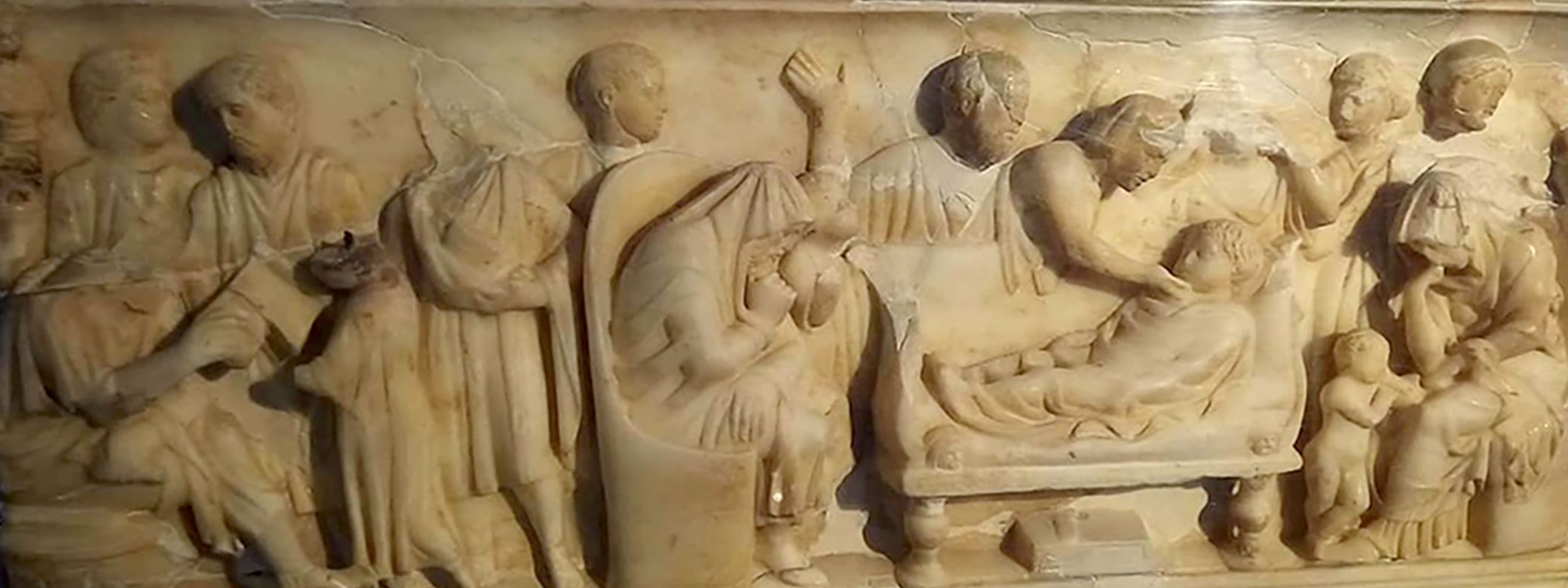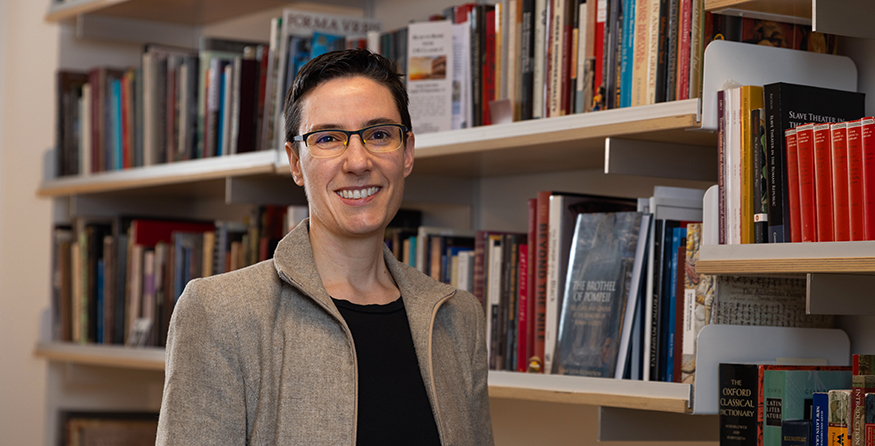
Sarah Levin-Richardson is a detective, searching for information about the lives of enslaved individuals in the ancient world. An enslaved child in a Pompeii household. A prostitute in a brothel. A wet nurse caring for her slave owner’s children. Voices that have not been heard.
Primary sources from the Roman Empire provide little information about the emotional lives of slaves, but Levin-Richardson, associate professor of Classics in the UW College of Arts & Sciences, has gleaned information using non-traditional sources and creative approaches.
“Piecing together the puzzle of ancient lives is interesting, frustrating, and necessary,” Levin-Richardson says. “It’s all of those things.”
Slavery in the Roman Empire
Levin-Richardson first studied the ancient world’s marginalized groups as a graduate student, when she wrote a paper on erotic graffiti found at a brothel in Pompeii. About 150 graffiti remain at the brothel, providing a visceral connection to people who lived 2,000 years ago. The brothel later became the subject of Levin-Richardson’s first book, “The Brothel of Pompeii: Sex, Class, and Gender at the Margins of Roman Society.”
Most of the prostitutes at the brothel were slaves, which led Levin-Richardson to a deeper exploration of the lives of enslaved people in ancient Rome. She explains that many individuals who were enslaved came from regions conquered by the Romans, where they had previously been free citizens. “Enslaved people were from everywhere that Rome had ever been,” she says. “They looked just like Romans, just with zero rights.”
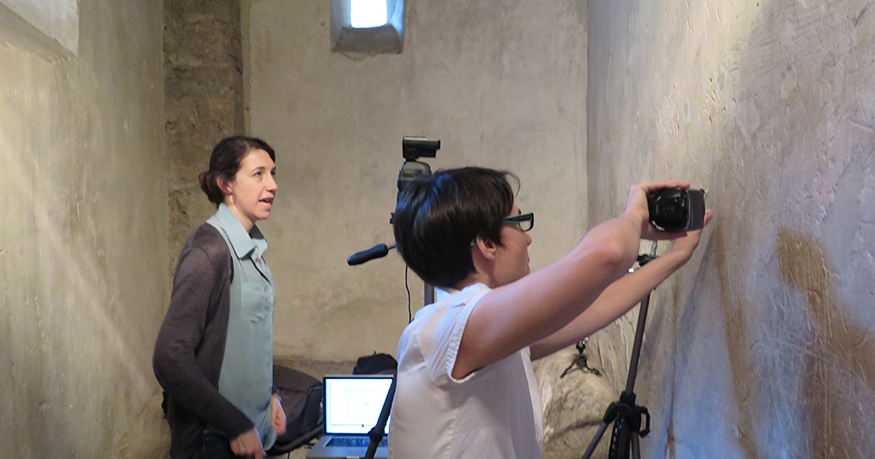
Ancient Greek and Roman literature espouses the concept of “benevolent slavery,” arguing that slaveowners took good care of their slaves, who would otherwise have been impoverished and dying in the streets. The narrative was convincing enough that nearly all Roman citizens believed slavery was a good system, even for the enslaved individuals.
“What’s interesting is that scholars historically have believed in ‘benevolent slavery’ a little bit too much,” says Levin-Richardson. “And there’s a really problematic history of slavery in the US looking to Roman slavery for justification. Over the past fifty years, scholars have been working on bringing this dark legacy to light. But we have been struggling to find tools to understand and reckon with how bad slavery was or could be.”
Searching for Clues
Plays and other sources from the Roman Empire often mention slaves. The writer might laud the companionship of a particular slave or depict slaves being sold and separated from loved ones. But most of those accounts were written by members of the elite class.
“We don’t have autobiographies written by enslaved people,” Levin-Richardson says. “We have very little of what they’re writing themselves. And so what my project is doing is seeing what their owners are saying and reading carefully to understand what’s behind their words.”
“We don’t have autobiographies written by enslaved people, ...so what my project is doing is seeing what their owners are saying and reading carefully to understand what’s behind their words.”
One example: A Roman poem, written to console a slave owner when his favorite slave child — not his biological child — died. The poem, written by a friend of the slave owner, praises the deceased for an uncanny ability to anticipate the slave owner’s needs and wants. It mentions the child calming the slave owner in moments of anger and preventing the slave owner from hitting other slaves. The subtext, says Levin-Richardson, is that slaves were required to perform emotional as well as physical labor. The child understood that all the slaves in the household would suffer if he couldn’t calm the owner.
Levin-Richardson found more information in a third-century BCE contract for a wet nurse. (Many wet nurses were slaves.) A clause in the contract states that the wet nurse will not kidnap the child and take it to a sanctuary. “Sanctuaries were where slaves would go for safe haven if they were being mistreated,” Levin-Richardson explains. “This clause tells me that this may have happened previously in this household. A wet nurse may have thought, ‘This situation is intolerable. If I take the slave owner’s kid with me, they have to pay attention to me and do something about the mistreatment.’”
A painting of a dinner party, on the wall of a Pompeii home, may help shed light on another aspect of the lives of enslaved individuals. Paintings of social gatherings were common in ancient Rome, but this one is stands out because of its location — in a work area of the house — and the unrefined quality of the art. Scholars believe it is the work of slaves in the household depicting one of their own gatherings — an example of resilience and community despite difficult circumstances.
Narratives to Animate the Past
Levin-Richardson cannot know for certain how the lives of enslaved people unfolded. But she can imagine various scenarios based on her research. She has begun to integrate such imaginings into her scholarly work through a process known as “critical fabulation,” an approach that involves using available information, however incomplete, to create narratives about marginalized individuals whose stories would otherwise not be told. The method was first introduced by African American Studies scholar Saidiya Hartman (Columbia University).
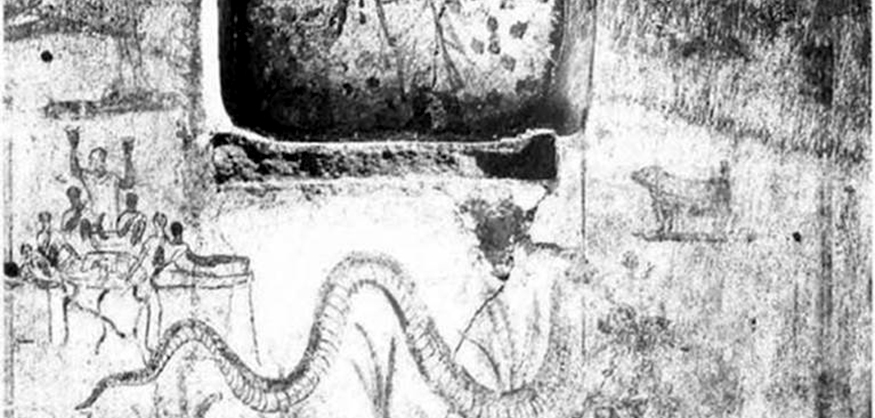
Such approaches are becoming more popular in historical fields because they allow researchers to address questions that cannot be answered using more common methodologies. In recent academic articles, Levin-Richardson has first described and analyzed source materials — the artworks and layout of a slave owner’s house, for example — followed by a critical fabulation about the experience of an enslaved individual living in that house, based on those source materials. “Critical fabulation gives us a way to present multiple hypotheses or possibilities that could be made with the same set of evidence,” she says.
Levin-Richardson has brainstormed about this approach with UW faculty in other academic disciplines as a member of the Society of Scholars, an intellectual community of humanists at the University who discuss their research in progress. “Everyone there is such a deep and generous thinker,” she says of the program, part of the Simpson Center for the Humanities. “They’ve been able to give me so many ideas about how creative approaches in scholarship can work.” A UW Royalty Research Fund award freed up time for her to pursue this new avenue of scholarship.
As Levin-Richardson continues to research the lived experiences of slaves in ancient Rome, finding meaningful source material will remain a challenge. But that makes every discovery more precious.
“Every time I find a new little piece of information, one little gem that someone hasn’t noticed before, it’s so exciting,” she says.
More Stories

A Statistician Weighs in on AI
Statistics professor Zaid Harchaoui, working at the intersection of statistics and computing, explores what AI models do well, where they fall short, and why.
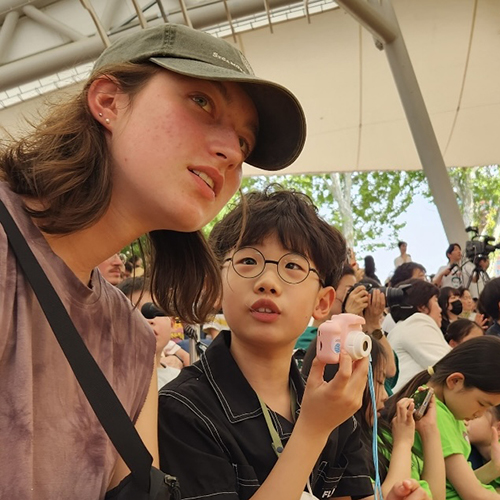
Finding Family in Korea Through Language & Plants
Through her love of languages and plants — and some serendipity — UW junior Katie Ruesink connected with a Korean family while studying in Seoul.

The Mystery of Sugar — in Cellular Processes
Nick Riley's chemistry research aims to understand cellular processes involving sugars, which could one day lead to advances in treating a range of diseases.
